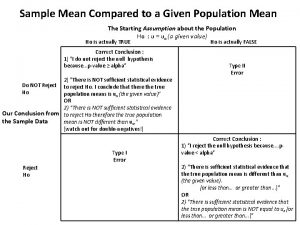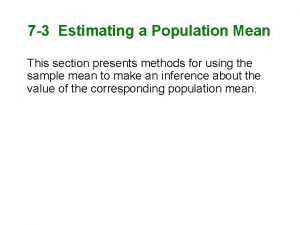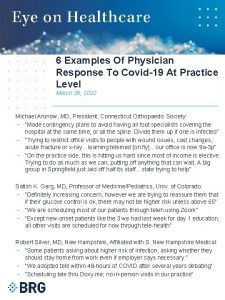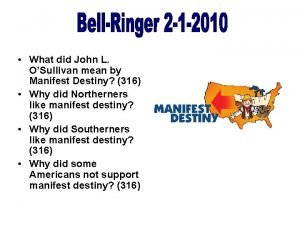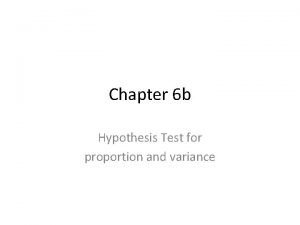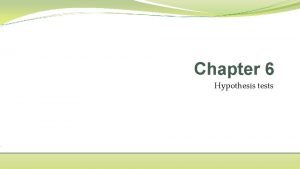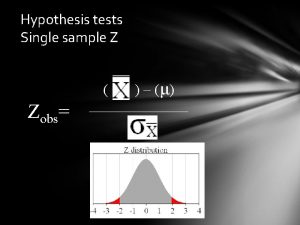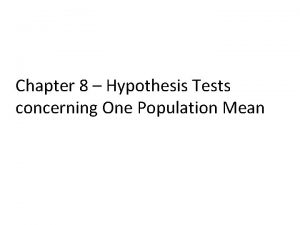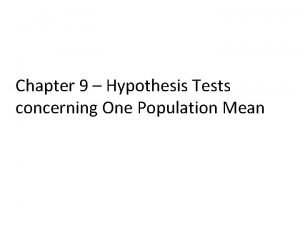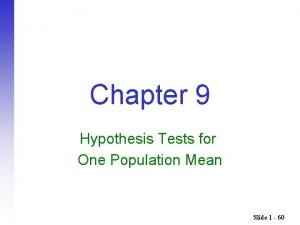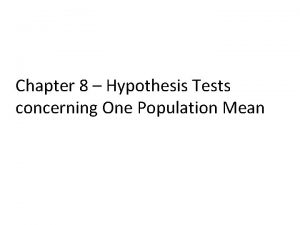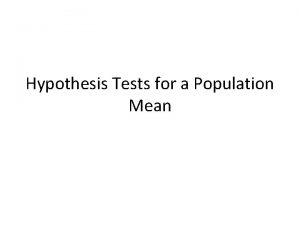HYPOTHESIS TESTS ON A POPULATION MEAN MICHAEL SULLIVAN













- Slides: 13

HYPOTHESIS TESTS ON A POPULATION MEAN MICHAEL SULLIVAN JOLIET JUNIOR COLLEGE SULLYSTATS@GMAIL. COM OR MSULLIVA@JJC. EDU VISIT SULLYSTATS. COM

TESTING A HYPOTHESIS ABOUT A POPULATION MEAN: SIMULATION Coors Field is home to the Colorado Rockies baseball team and is located in Denver, Colorado. Denver is approximately one mile above sea level where the air is thinner. Therefore, baseballs are thought to travel farther in this stadium. Does the evidence support this belief? In a random sample of 15 homeruns hit in Coors Field, the mean distance the ball traveled was 417. 6 feet. Does this represent evidence to suggest that the ball travels farther in Coors Field than it does in the other Major League ballparks?

TESTING A HYPOTHESIS ABOUT A POPULATION MEAN: SIMULATION

TESTING A HYPOTHESIS ABOUT A POPULATION MEAN: SIMULATION To do this, we will obtain 1000 simple random samples of size n = 15 from the population. Data > Sample Select the variable “Distance”. Enter 15 for the sample size. Check the radio button “Stacked with sample ID”. Open in new data table. Compute the mean of each sample by selecting Stat > Summary Stats > Columns Select Distance(Sample) for the variable; group by Sample. Only compute the mean.




Why is the P-value so much larger using Student’s t-distribution?

REPEAT THE SIMULATION WITH NEW SAMPLE DATA

THE BOOTSTRAP Adjust the data so that the mean of the sample data equals the mean stated in the null hypothesis.



 Ace different iq tests still make
Ace different iq tests still make Sample mean vs population mean
Sample mean vs population mean What is the point estimate of μ?
What is the point estimate of μ? Michael sullivan brg
Michael sullivan brg John l osullivan
John l osullivan Research hypothesis example
Research hypothesis example Null hypothesis vs alternative hypothesis
Null hypothesis vs alternative hypothesis Null hypothesis and alternative hypothesis examples
Null hypothesis and alternative hypothesis examples Weakness of protoplanet hypothesis
Weakness of protoplanet hypothesis Hypothesis testing for population proportion
Hypothesis testing for population proportion Population ecology section 1 population dynamics answer key
Population ecology section 1 population dynamics answer key Section 1 population dynamics
Section 1 population dynamics Population ecology section 1 population dynamics
Population ecology section 1 population dynamics Population ecology section 1 population dynamics
Population ecology section 1 population dynamics

